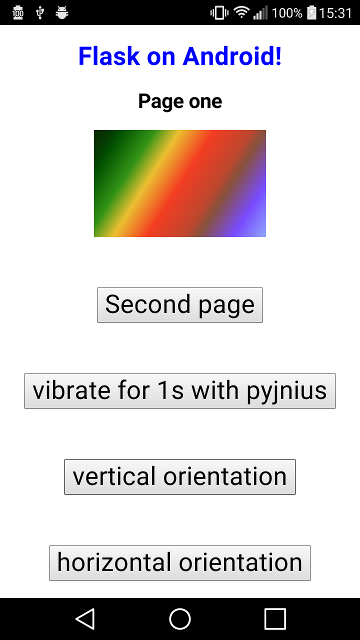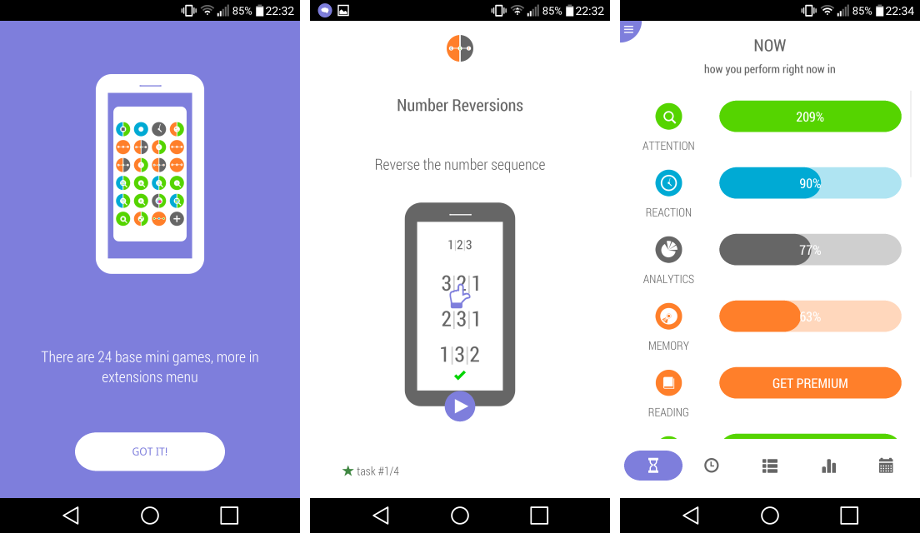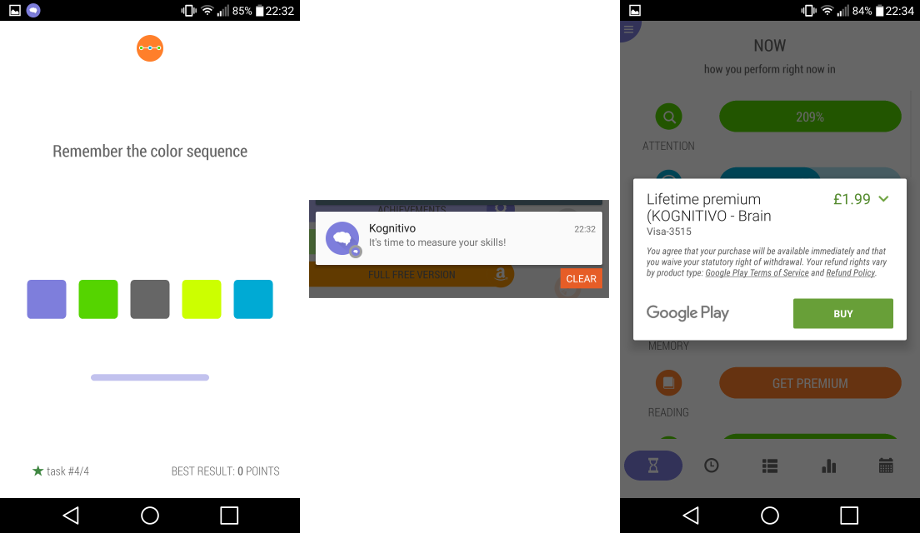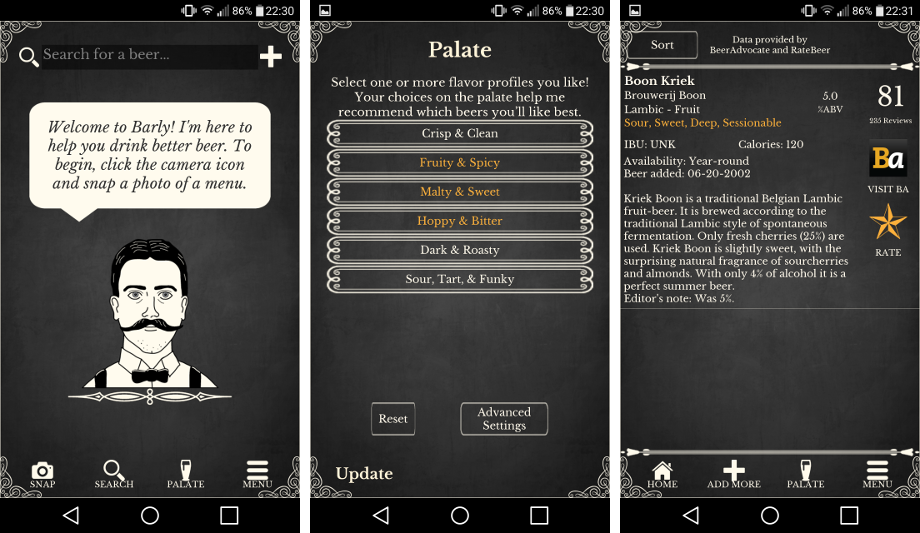A natural question when people hear about Kivy as a way to create Android apps in Python
is…what can you do with it? Is it performant enough for games, can
you call the Android APIs, do all apps look the same? One of the best
resources for these kinds of question are existing apps, and in this
post I’ll give a quick impression of three of my favourites. This is
obviously highly subjective, but I’m focusing in particular on
features of technical interest, apps that push Kivy beyond what’s
normal to show what it is capable of.
If you’re interested in other examples, there’s a fairly extensive
(but far from exhaustive) list on the Kivy wiki,
including winners of our programming contests and many contributions
from users. If you’d like to make your own apps in Python, check out Kivy (which also runs on Windows, Linux, OS X
and iOS) and python-for-android (which can
also package non-Kivy Python apps).
Boardz
You can download Boardz here.
I’ve put Boardz first because it’s my single favourite Kivy app. It’s
actually a work in progress (and in fact hasn’t been updated for a
while), but is already a fun game showcasing some of Kivy’s more
impressive performance potential.
Boardz is a snowboarding physics game; you control your snowboarder by
touching the screen, then moving your finger with respect to its
initial position to control your posture; quick movements
throw your weight around and can cause you to jump, spin, or fall
over, while just positioning the rider differently helps you to pick
up speed or navigate barriers. The objective of the game is to get to
the end of each stage, with different obstacles including
slopes and jumps, collapsing structures, falling rocks, or even
multidirectional gravity and rocket boosters. You can fail if your
head collides with another object with too much force, or if you
simply get stuck and can no longer reach the finish.
What’s immediately impressive is that all this runs well as a Python
powered game running on a smartphone. It achieves this by being built
using the KivEnt game engine developed by
Jacob Kovac, one of Kivy’s core developers. This entity based system
lets you write game code in Python but internally is highly optimised
in Cython, using Kivy’s OpenGL API extremely efficently as well as
interfacing with the popular Chipmunk Physics engine.
Boardz betrays its in-progress nature in other ways; you can see in
the above screenshots that its UI isn’t very polished, and in this
sense it’s the worst of the apps I’m showing here. However, it makes
up for this with its surprisingly engaging gameplay, and a breadth of
entertaining features not showcased here, including leader boards,
racing your ghost, and different riders with different physics attributes.
A final technical feature interesting to Kivy app developers is that
Boardz includes ad integration. Regardless of your feelings about ads
themselves, the ability to use them is a major feature enquiry from
new Kivy users. The problem here is that integrating with a normal ad
provider normally requires adding to the Java components of your app,
which it may not be immediately obvious how to do from Python. There
are actually a number of resources for this nowadays, with a key point
being that python-for-android tries to make
it easy to include extra Java code, with which you can interact from
Python using Pyjnius. KivEnt’s
implementation, pictured above, is a nice demonstration.
Kognitivo
You can download Kognitivo here.
Kognitivo is perhaps the single most polished Kivy app on the Play
store, being relatively complex, extensively customised, and
exhibiting a number of nice Android API interactions. It is also
(deservedly) possibly the most popular Kivy app on Google Play.
Kognitivo is a brain training and performance monitoring app. The
basic structure is to perform a series of simple exercises intended to
test different aspects of cognitive performance, being rated on
accuracy and speed, and with the results compiled over time in order
to detect and act on trends.
As I’ve said already, the nice thing about Kognitivo is its huge amount
of polish. It is extensively themed such that no trace of the Kivy
defaults remains, runs extremly smoothly, and includes many nice
animation tweaks (unfortunately not captured in screenshots) to feel
responsive and active.
On the technical side, Kognitivo exhibits a number of features not
normally included in Kivy applications but possible through
interaction with the Android API via some Java code and/or the
aforementioned Pyjnius. These include notifications, interaction with
your calendar, and in-app purchases.
The author of Kognitivo, Sergey Cheparev, has his own writeup of
Kognitivo’s development on his blog, including
discussion of the advantages and disadvantages of Kivy development,
and of the experience of putting together all these features. This is
a great resource on its own; I don’t agree with some of the author’s
criticisms and some of Kivy’s features have been improved since then,
but it’s an excellent overview of the experience. Most of all, he
enthusiastically captures some of my own reasons for finding Python on
Android interesting:
I think the most beautiful thing in it is to use the almightiness
of [Python]’s frameworks. I used sqlalchemy and sqlite as a
backend, and it worked like a charm! Python is the most powerfull
language because of it’s frameworks, you can even start Django on
your smartphone! It’s amazing! Or twisted for asynchro
communication with server. Or nltk for in-app natural language
processing. Or maybe you want make a mobile equations solver with
scipy and numpy. This makes all the dreams come true.
Barly
You can download Barly here,
or visit its own website.
Barly is the most recent of these apps to appear on Google Play. I’ve
chosen to include it as a nice example of pulling off its concept
quite well while making good use of Kivy; like Kognitivo the app is
themed very differently to Kivy’s defaults (though it doesn’t look
like a normal Android app either), and is generally well put together.
To quote its Google Play blurb, Barly is ‘your personal beer
expert’. It provides a convenient interface to browse beers via data
from standard popular websites, and according to your description of
your own palate. Barly’s most interesting feature is the ability to
take a picture of a beer menu and have it automatically detect what
beers are listed, followed by downloading information about them to
help you choose. That kind of image analysis has to be tricky, but
actually didn’t perform badly when I tested it.
The interface to this functionality is quite nice, switching to the
Android camera app to get the image before uploading it to a server
for processing (during which you can input your preferences). This
functionality is possible with Pyjnius as mentioned previously, but
actually in this case is an API also exposed in pure Python by Plyer (another Kivy sister project,
wrapping platform-specific APIs in a Python frontend). Not all APIs
can be conveniently exposed this way, and actually Barly may not even
be using this particular method, but it’s a good example of
functionality that can be achieved with Kivy in a particularly
cross-platform way.
Beyond this, Barly does not make such wide use of the Android API or
unusual Kivy features, but nor does it try to; it is a nice example of
a complete and self-contained Kivy app using the power of Python for
an unusual and interesting goal.





